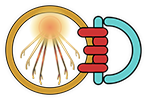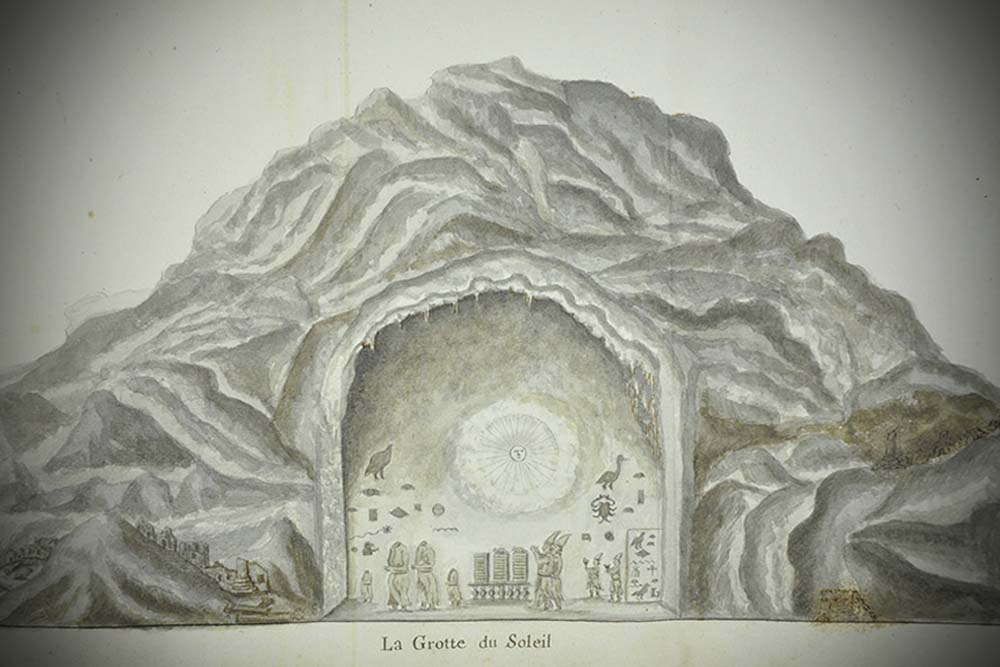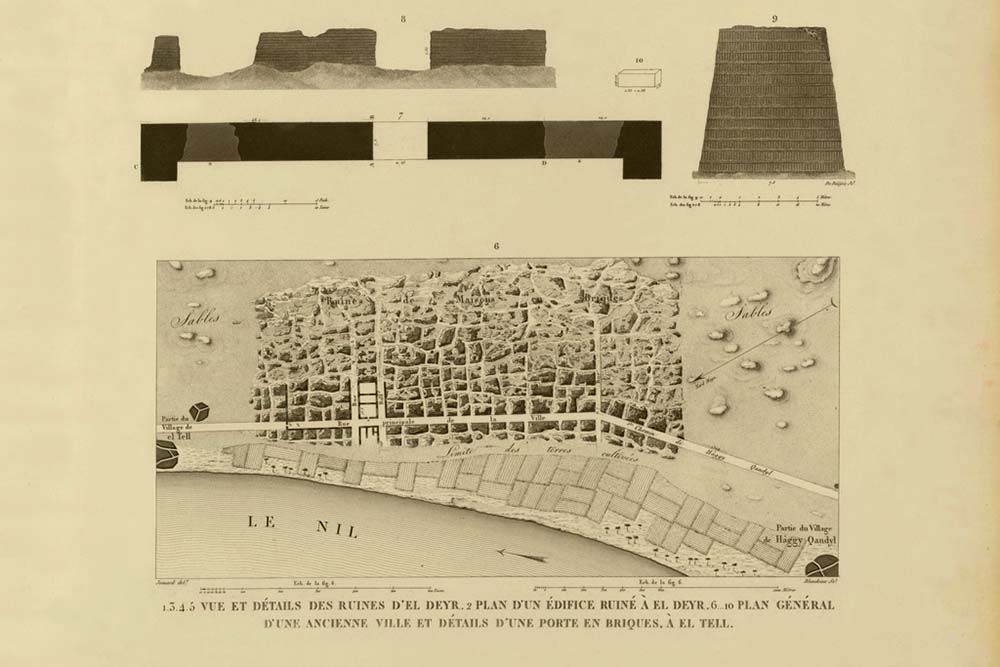Expeditions : Surveys : Excavations
1738 and 1741 |
| Frederick L. North and Charles Perry visit Amarna on their travels. |
1798 – 1799 |
| Under the Napoleonic expedition Edme Francois Jomard records the remains of a city system and produces a map of the central city. |
1824 |
| The English Egyptologist John Gardner Wilkinson, discovers the rock tombs on the east side of the city. |
1826 |
| In his second visit Wilkinson identifies Amarna [wrongly] as the classical ‘Alabastron’ of Roman authors. He later establishes the sites name as ‘Til el Amarna’ based on the name of a local tribe ‘El-Amarna’ (also the name of the entire district) and a nearby village named ‘el-Till’. This mistakenly gave the impression that the site was a ‘tell’ or man made mound constructed from a long period of habitation. The name would later become ‘Tell el-Amarna’. He publishes his research under the title “Manners and Customs of the Ancient Egyptians”. |
1828 |
| Jean-Francois Champollion visits Amarna and identifies the Great Aten Temple. |
1830 – 1833 |
| Robert Hay comes with his expedition to Amarna and examines tomb no. 2 and 13. Previously in 1827, he had also drawn one of the boundary stelae. |
1839 |
| Nestor L’Hote visits the city and the rock tomb sites. He examines tomb number 3 belonging to Ahmes (Ahmose). He makes a number of castings which are later destroyed by water in the hold of the ship transporting them back to Europe. |
1843 |
| The Prussian expedition under Karl Richard Lepsius visits the site for three days and sketches some of the tomb scenes and inscriptions. He also makes a number of plaster casts. |
1845 |
| Lepsius visits Amarna for a second time and decides that Akhenaten is male not female as previously thought due to the distinctive artwork representing him. The relationship with the sun cult is now realised. |
1859 |
| Heinrich Brugsch first speaks of a religious revolution and the worship of only one God. |
1881 – 1884 |
| Gaston Maspero and Urbain Bouriant excavate 40 tombs in Amarna. |
1881 – 1882 |
| Locals discover the Royal Tomb of Akhnaton. |
1883 – 1884 |
| Urbain Bouriant discovers and copies the “Great Hymn to the Aten” in the tomb of Ay. |
1887 |
| Local woman discovers nearly four hundred clay tablets inscribed in cuneiform script – the Amarna Letters, international diplomatic correspondence from the time of Akhenaten. She travels with the tablets to sell to Egyptologists who do not see the immediate value. By the time they are recognised as important many of them have been reduced to fragments. |
1891 – 1892 |
| Alessandro Barsanti of the Egyptian Antiquities Service clears the king’s tomb at Amarna. |
1891 – 1892 |
| Due to the discovery of the clay tablets the Egypt Exploration Fund of London sends an excavation team to Amarna under the guidance of William M. F. Petrie and his assistant Howard Carter. He finds further clay tablets and the “State Archives” near the royal residence. |
1894 |
| The ‘Hymn of the Sun’ is the theme of James Henry Breasted’s PhD dissertation ‘De hymnis in solem sub rege Amenophide IV conceptis’, submitted to the University of Berlin. |
1896 |
| Alessandro Barsanti, working on behalf of the Egyptian Antiquites Service excavates the Maru-Aten Palace and removes some of the painted floor panels. They are placed in the Egyptian collections of the Cairo and Berlin museums. |
1901 – 1907 |
| Norman de Garis Davies surveys the rock tombs of Amarna and later publishes his research in 6 volumes. |
1903 |
| Urbain Bouriant, Georges Legrain, and Gustave Jéquier publish the first scientific publication of the Royal Tomb of Amarna. |
1907 |
| Ludwig Borchardt begins his first excavations of the site ruins. |
1907 |
| Theodore Davies believes he has found the mummy of Akhenaten within Tomb No. 55 in the “Valley of the Kings”. |
1910 |
| Arthur Weigall writes the first monograph on Akhenaten entitled “The life and times of Akhenaten, pharaoh of Egypt”. |
1911 |
| The Deutsche Orient-Gesellschaft (DOG – German Oriental Society) under the direction of Ludwig Borchardt begin excavations in the southern city ruins. |
1912 |
| The house of the sculptor Thutmoses is excavated. Numerous model heads are found, among them the bust of Queen Nefertiti. |
1914 |
| The work of the Deutsche Orient-Gesellschaft cease due to the start of the First World War. |
1921 – 1936 |
| The Egypt Exploration Society begins extensive excavations in the urban area under Thomas Eric Peet, Leonard Woolley, Francis Newton, Henri Frankfort and John D. S. Pendlebury. The excavation reports are later released as ‘The City of Akhenaten’ in three parts. |
1925 – 1926 |
| Colossal statues of Akhenaten in Karnak are discovered. Henri Chevrier, the chief inspector of antiquities at Karnak, begins to excavate the area periodically for the next 25 years. |
1920 (onwards) |
| Talatat blocks are found from buildings at Karnak, dating back to the time of Akhenaten and later reused as a filling material in new buildings. The decorated blocks provide important insights into the art and history of the Amarna period. |
1931 – 1932 |
| John D. S. Pendlebury re-examines the Royal Tomb of Amarna. |
1934 |
| The Royal Tomb is reproduced again by Herbert W. Fairman through drawings and photographs. |
1939 |
| The German Hermopolis expedition under the direction of Günther Röder finds reliefed limestone blocks that turned out to be the exterior walls of important Amarna buildings. |
1960’s |
| In the 1960s the Egyptian Antiquities Organization (now the Egyptian Supreme Council of Antiquities) excavates in Amarna. |
1970 |
| Geoffrey T. Martin re-examines the Royal Tomb of Amarna. |
1977 |
| The Egypt Exploration Society resume excavations at Amarna under the direction of Barry J. Kemp. |
1980 |
| The Deutsche Orient-Gesellschaft (DOG – German Oriental Society) publishes the results of the excavations in Amarna between 1911 and 1914 under the title “Die Wohnhäuser in Tell el-Amarna” (The houses in Tell el-Amarna). |
1980 (onwards) |
| . |
2007 |
| The Egypt Exploration Society discover a cemetery close to the southern rock tombs of the Nobles. |
.


